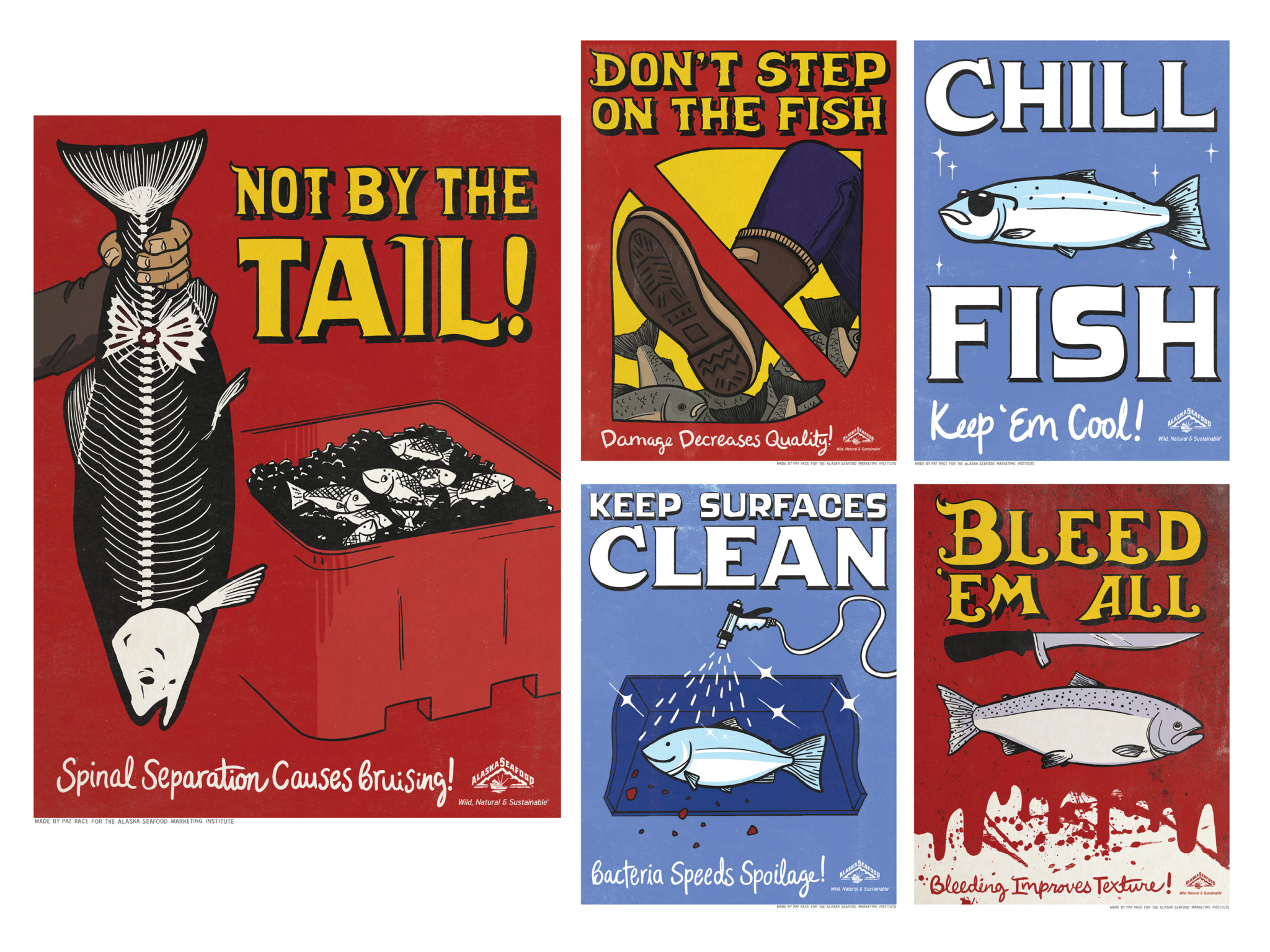I love fish. I grew up in Juneau, Alaska, and my parents always had fish on the plate. Or in a bowl. Dad made this stuff he called Matanuska Fish Stew, which I’m convinced was an entirely fabricated dish. It was always a different color and texture. The only consistency between the different versions was the ceremonial blob of sour cream he would slap down on each serving.
Don’t get me wrong, it tasted great. It was just weird. For the sake of making a graceful transition, let’s call it creative.
The concept of art should elude definition, but I like to think it’s most heavily rooted in communication.
Maybe you’re trying to convince people that Alaska seafood is amazing and delicious, or maybe you’re trying to share your experience as an Alaska Native living in a colonized land. Whatever the purpose, when communication transcends words or images to become a shared understanding, I think we get close to art.
In addition to salmon can labels, these posters were inspired by the creative and iconic illustrations associated with the Works Progress Administration. The WPA was an ambitious American New Deal agency that employed 8.5 million Americans from 1935 to 1943. In addition to construction and infrastructure projects, the WPA employed many artists to carry out design, media and literacy projects.
I think the important thing with commercial art is that you carefully choose work that aligns well with the things you believe or already want to communicate. This was an easy project to get on board with because I love Alaska seafood. I think it’s some of the best eating on the planet.
Even when it’s in a weird stew.
Bleeding
Bleeding fish affects two main components of quality: taste and appearance.
Blood can give a fillet that “fishy” flavor. Furthermore, most people would likely say they prefer a clean, bloodless fillet over one with blood spots intact.
Techniques for bleeding fish range from the simple and quick (ripping out a couple of gills) to the more labor-intensive, but effective (pressure bleeding with a pipette-tipped hose), and may or may not be feasible in all fisheries.
However, the verdict is clear: A well-bled fish produces high-quality, valuable seafood.
Chilling
Widely regarded as the most important factor in preventing quality loss, chilling fish helps slow the processes that degrade quality and value once a fish is landed. For instance, bacteria speed the process of spoilage, and bacterial growth is inhibited by cold temperatures. Whether using refrigerated seawater or ice, the generally accepted target temperature range for chilling fresh product onboard is 33 to 38 degrees. Frozen product is of course below these temperatures, and is an excellent method of maintaining quality. Most of Alaska’s seafood is exported frozen.
Cleaning
In addition to inhibiting bacterial growth with temperature, proper sanitation measures can help keep this potential cause of spoilage under control. The surfaces fish touch get slimy — fast. But did you know that fish slime contains bacteria that can grow and multiply if left on surfaces? That’s why it’s important, either between hauls on a vessel or between landings at a processing plant, to properly sanitize all surfaces the fish come in contact with.
Watching your step
Now why would you do that? Joking aside, fishing gets hectic sometimes, and if you’ve fished enough in Alaska, you’ve likely stepped on a salmon or two.
However, similar to dropping fish or holding them by the tail, stepping on fish can result in bruising. When bruising occurs, blood vessels break and leak blood into the flesh. This negatively affects a fillet’s appearance and texture.
So whether you’re on deck or in the processing plant, watch your step!







